
|
Astronomy Picture Of the Day (APOD)
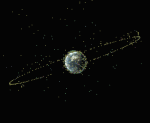 The Satellites that Surround Earth
The Satellites that Surround Earth
14.07.2003
Thousands of satellites orbit the Earth. Costing billions of dollars, this swarm of high altitude robots is now vital to communication, orientation, and imaging both Earth and space. One common type of orbit is geostationary where a satellite will appear to hover above one point on Earth's equator.
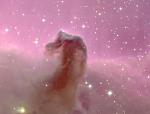 The Horsehead Nebula
The Horsehead Nebula
13.07.2003
One of the most identifiable nebulae in the sky, the Horsehead Nebula in Orion, is part of a large, dark, molecular cloud. Also known as Barnard 33, the unusual shape was first discovered on a photographic plate in the late 1800s.
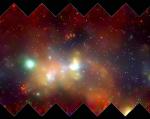 X Ray Milky Way
X Ray Milky Way
12.07.2003
If you had x-ray vision, the center regions of our Galaxy would not be hidden from view by the immense cosmic dust clouds opaque to visible light. Instead, the Milky Way toward Sagittarius might look something like this stunning mosaic of images from the orbiting Chandra Observatory.
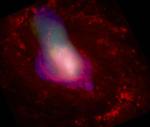 NGC 1068 and the X Ray Flashlight
NGC 1068 and the X Ray Flashlight
11.07.2003
At night, tilting a flashlight up under your chin hides the glowing bulb from the direct view of your friends. Light from the bulb still reflects from your face though, and can give you a startling appearance.
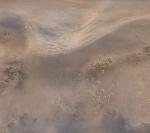 Dust Storm Over Northern Mars
Dust Storm Over Northern Mars
10.07.2003
Almost on cue, as Mars nears it's closest approach to planet Earth in recorded history, ominous seasonal dust storms are beginning to kick up. Observers worry that the activity may presage the development...
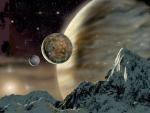 HD70642: A Star with Similar Planets
HD70642: A Star with Similar Planets
9.07.2003
Astronomers have discovered a planetary system more similar to our own Solar System than any known previously. The bright star HD70642, visible with binoculars toward the constellation of Puppis, was already known to be a star like our Sun.
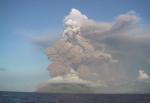 Mt Anatahan Erupts
Mt Anatahan Erupts
8.07.2003
Nobody suspected that this volcano would erupt. Mt. Anatahan has not erupted in recorded history. Nevertheless, on May 10, the small volcano in the Northern Mariana Islands of the western Pacific Ocean shot ash 10,000 meters into the air. Explosions from Mt. Anatahan continued every few minutes for two days.
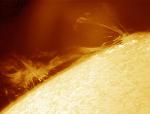 At the Edge of the Sun
At the Edge of the Sun
7.07.2003
Dramatic prominences can sometimes be seen looming just beyond the edge of the sun. A solar prominence is a cloud of solar gas held just above the surface by the Sun's magnetic field. The Earth would easily fit below the prominence on the left.
 Fractal Interstellar Dust Up Close
Fractal Interstellar Dust Up Close
6.07.2003
Our universe is a very dusty place. Dust usually shows its presence by blocking out light emitted from stars or nebulae behind it, sometimes creating the illusion of a horse's head or a sombrero hat. But nobody really knows what a typical interstellar dust grain looks like.
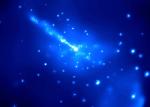 Centaurus A: X-Rays from an Active Galaxy
Centaurus A: X-Rays from an Active Galaxy
5.07.2003
Its core hidden from optical view by a thick lane of dust, the giant elliptical galaxy Centaurus A was among the first objects observed by the orbiting Chandra X-ray Observatory. Astronomers were not disappointed, as Centaurus A's appearance in x-rays makes its classification as an active galaxy easy to appreciate.
|
January February March April May June July August September October November December |
|||||||||||||||||||||||||||||||||||||||||||||||||